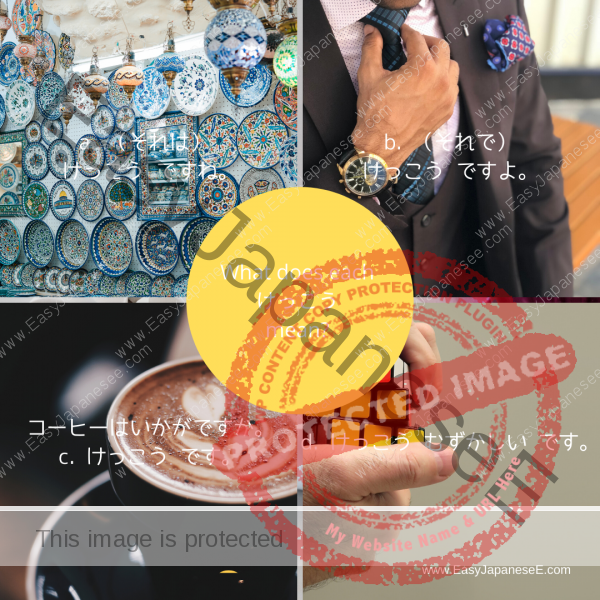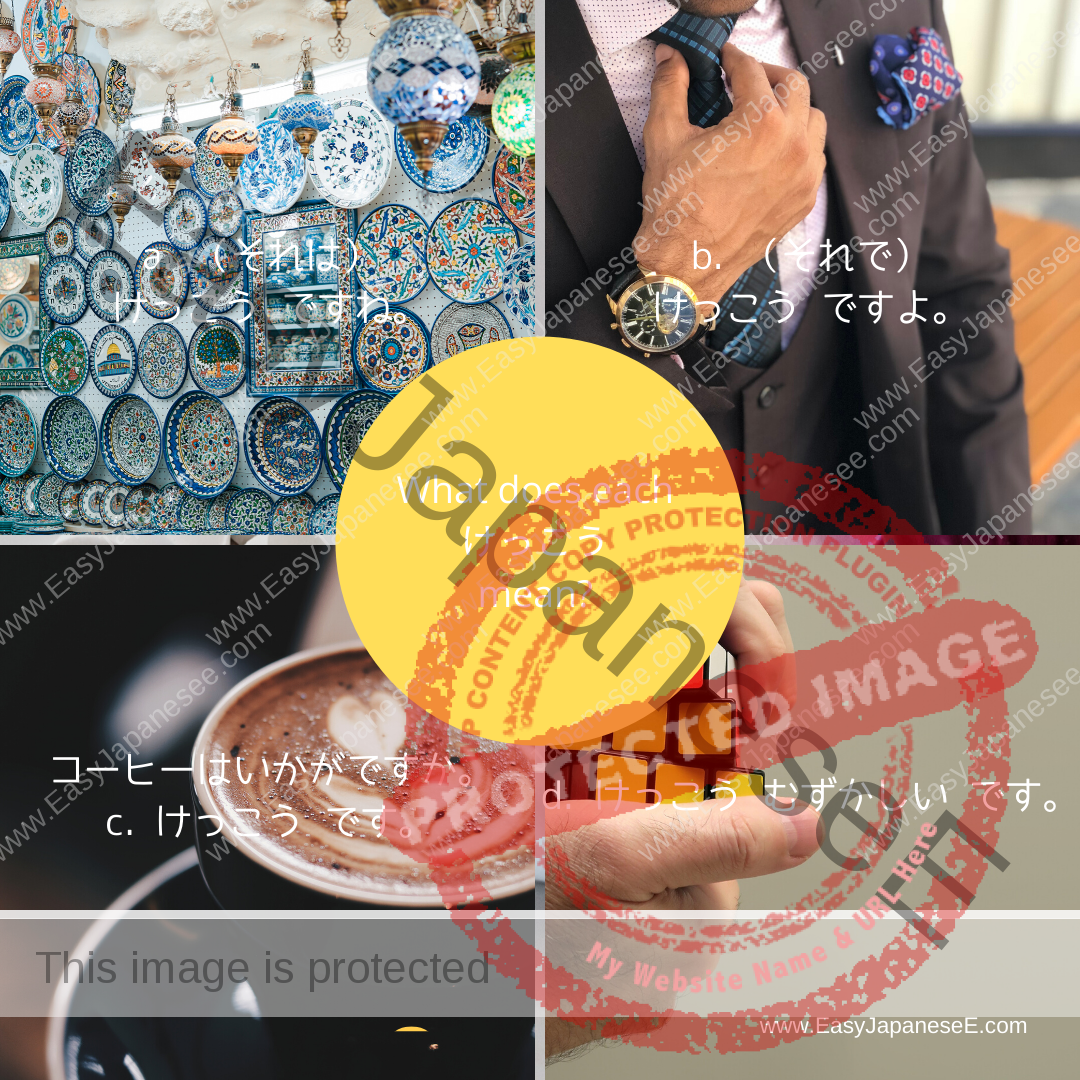
a. (それは) けっこう ですね。
b. (それで) けっこう ですよ。
c. けっこう です。
d. けっこう むずかしい です。
The Japanese word 結構(けっこう) is similar to the English word “fine.” It has a variety of meanings, some of which are opposing to each other.
Translation of the captions are:
a. [as a compliment] It is great!
b. [with something just OK] That is satisfactory.
c. [as an answer to a question whether or not I want (more of) something] I’m fine (I don’t want it).
d. [used as an adverb in front of an adjective] It is rather difficult.
It is not always the case but pay attention to the particle before けっこう. If it’s a compliment, ~は is often used before けっこう. If it’s used to mean “just satisfactory,” ~で is likely to precede けっこう.


One Reply to “What does けっこう mean?”